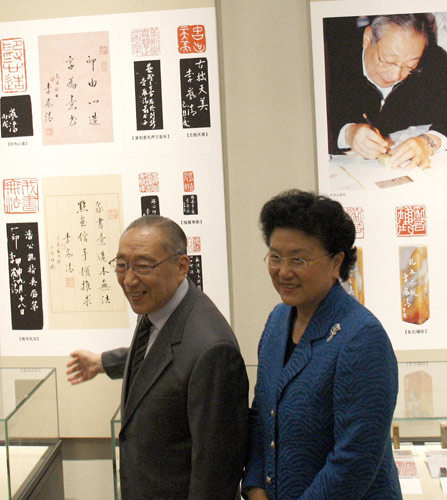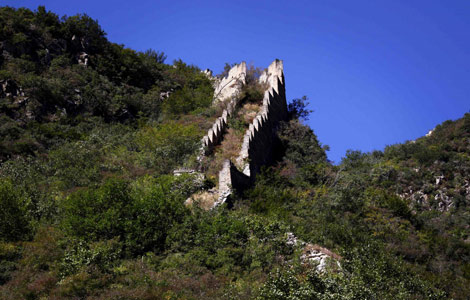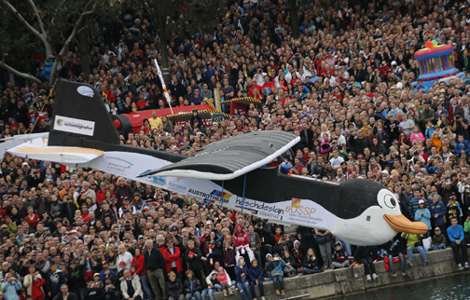After State, Li sets seal on art world
Updated: 2011-05-21 08:08
By Zhu Linyong (China Daily)
|
|||||||||||
BEIJING - A large-scale solo art show featuring seal-cutting and calligraphy by Li Lanqing, former vice-premier of the State Council, opened on May 20 at the National Art Museum of China in Beijing.
The exhibition, titled "Popular Seal-cutting", presents 554 stamped signets, more than 200 calligraphic pieces Li has produced in recent years, and 400 original stone seals from his personal collection.
|
 Li Lanqing (left), former vice-premier, visits his arts exhibition at the National Art Museum of China in Beijing on Friday. He is accompanied by Liu Yandong, State Councilor. [Photo by Zhang Wei / China Daily] |
The exhibition, and well-designed catalog, reveal "the former vice-premier's passion for art, his deep love for the nation and the people, and his profound knowledge of Chinese culture", Vice-Minister of Culture Wang Wenzhang said at the opening of the exhibition.
Unlike many art shows of works by celebrities and politicians, "Li's art exhibition, with myriad successfully rendered showpieces, sheds new light on the vitality and potential of seal-cutting, a traditional art genre in the contemporary world", added National Art Museum Dean Fan Di'an.
The art of seal-cutting, dates back more than 3,000 years to the Shang Dynasty (16th century-11th century BC) and is listed along with calligraphy, painting and poetry as one of the four essential skills required of an ancient scholar.
The highly regarded skill is an integral part of Chinese ink painting and calligraphy.
However, thanks to his innovative artistic creations in a broader range of subjects and compositions than any traditional seal-cutting artist has done, Li "has made remarkable headway in turning the minor art into a relatively independent, and popular genre the general public can enjoy and practice", Fan said.
"Since my retirement in 2003, I have concentrated on sports, reading, and artistic creations - seal-cutting in particular," Li told a crowd of government ministers, scholars, artists, and 20 principals of high schools and university directors who received catalogues Li donated at the opening ceremony.
Li said the original motivation behind his artistic creations was to keep fit and keep agile.
However, he gradually has come to the idea of promoting Chinese culture through his art for he is deeply concerned about the increasing number of Chinese youths in the Internet era who are losing interest in and ability to write Chinese characters, which Li believes is a vital vehicle for the Chinese civilization.
In 2007, Li published Seal-cutting Can Be Great Fun, to share with readers his understanding and appreciation of the genre.
The book has outdone other books in the same category, according to Su Yuheng, general manager of Higher Education Press, the publisher and co-organizer of the exhibition.
Since 2007, Li has also had solo exhibits of his seal-cutting and calligraphic work in several foreign countries and regions including India, Singapore, Russia and France.
An ardent lover of the classical music of Europe as well as traditional Chinese music, Li has also had solo shows and given lectures on music, seal-cutting and calligraphy in numerous Chinese universities.
"Li has set a model for people, especially the younger generations, in inheriting and furthering Chinese culture; the exhibition and the newly launched catalogue will have a far-reaching impact on local audiences," Wang Wenzhang said.
The exhibition will end on May 29.











